Buy Acetic Acid Online
£170.00 – £450.00Price range: £170.00 through £450.00
Acetic acid for sale
Acetic acid is a clear, strong-smelling organic liquid and the most significant carboxylic acid. It’s a key component of vinegar and can be produced through fermentation, oxidation of natural carbohydrates, bacterial action on ethanol, or by reacting methanol with carbon monoxide. Acetic acid is widely used as a chemical reagent and solvent in industries like film, wood, textiles, oil and gas, food, and pharmaceuticals.
What is Acetic Acid? | Buy Acetic Acid Online |Acetic Acid for sale 🔬
Welcome to Newchemicalz.com, your trusted source for premium chemical compounds. In today’s comprehensive guide, we explore one of the most versatile organic compounds in the chemical industry: acetic acid. Whether you’re a researcher, industrial professional, or student, understanding this fundamental compound is essential for many applications. We’ll cover everything from its basic properties to where you can buy acetic acid online for your specific needs.
What is Acetic Acid? The Complete Guide 🧪
Acetic acid is an organic compound with the chemical formula CH₃COOH. It’s a colorless liquid that, when undiluted, is called glacial acetic acid. This compound is best known as the main component of vinegar (apart from water), giving it the distinctive sour taste and pungent smell we all recognize.
The molecular structure consists of a methyl group (CH₃) attached to a carboxyl group (COOH), classifying it as a carboxylic acid. This simple structure belies its incredible versatility and importance across numerous industries.
According to research published by the Royal Society of Chemistry, acetic acid has been used for thousands of years, with evidence of vinegar production dating back to ancient civilizations. Its historical significance continues to this day, with modern applications expanding far beyond culinary uses.
Key Properties of Acetic Acid
- Chemical formula: CH₃COOH
- Molar mass: 60.052 g/mol
- Density: 1.049 g/cm³ (for glacial acetic acid)
- Melting point: 16.6 °C (61.9 °F)
- Boiling point: 118.1 °C (244.6 °F)
- Appearance: Colorless liquid
- Odor: Pungent, vinegar-like smell
- Solubility: Miscible with water, ethanol, ether, and other organic solvents
The versatility of acetic acid stems from its unique chemical properties, making it invaluable across various industries and applications.
The Best Properties of Acetic Acid for Industrial Applications 🏭
When considering acetic acid for industrial or research purposes, understanding its key properties helps determine its suitability for specific applications. The compound exhibits several characteristics that make it exceptionally useful:
Chemical Reactivity
Acetic acid is a weak acid, partially dissociating in water: CH₃COOH ⇌ H⁺ + CH₃COO⁻
This partial dissociation makes it less corrosive than strong mineral acids while still providing the acidic properties needed for many reactions. Its reactivity profile allows it to participate in numerous chemical reactions, including esterification, oxidation, and substitution reactions.
Solvent Properties
As a polar protic solvent, acetic acid can dissolve both polar and some non-polar compounds. This makes it valuable in:
- Industrial processes
- Laboratory research
- Chemical synthesis
- Extraction procedures
Stability and Storage
Glacial acetic acid is hygroscopic, meaning it absorbs water from the atmosphere. It should be stored in airtight containers to maintain concentration. The compound is relatively stable under normal conditions but can decompose at high temperatures, producing methane and carbon dioxide.
Safety Profile
While generally safer to handle than strong mineral acids, acetic acid still requires proper safety precautions:
- Corrosive to skin and eyes
- Inhalation can cause respiratory irritation
- Flammable liquid and vapor
- Environmental hazards if released improperly
Where to Buy Acetic Acid Online in the UK, USA, and Germany 🌍
Finding a reliable source to buy acetic acid online is crucial for ensuring quality and consistency in your work. At Newchemicalz.com, we pride ourselves on providing premium-grade acetic acid to researchers and industries across the United Kingdom, United States, Germany, Australia, and Asia.
What to Look for in a Supplier – Buy Acetic Acid Online
When searching for where to buy acetic acid, consider these essential factors:
-
Purity and Grade: Different applications require different purity levels. Research-grade acetic acid typically has a purity of 99.8% or higher.
-
Packaging Options: Quality suppliers offer various packaging sizes to meet different needs, from small laboratory quantities to bulk industrial orders.
-
Shipping and Handling: Proper handling ensures the integrity of the product during transit. Look for suppliers who understand the specific requirements for chemical shipping.
-
Documentation: Comprehensive documentation, including certificates of analysis and safety data sheets, should be provided with each order.
-
Customer Support: Knowledgeable customer service can help you select the right product for your specific application.
Geographical Considerations
Different regions may have varying regulations regarding the purchase and shipment of acetic acid:
- United Kingdom: Strict regulations apply to concentrated acetic acid, requiring proper documentation and handling procedures.
- United States: The EPA and OSHA regulate acetic acid handling, storage, and transportation.
- Germany: REACH regulations govern chemical substances, ensuring safety and environmental protection.
- Australia: Specific import requirements apply to chemical substances, including proper labeling and safety documentation.
- Asia: Regulations vary by country, with some having more stringent controls than others.
At Newchemicalz.com, we navigate these complex regulatory environments to ensure our customers receive their orders promptly and compliantly, regardless of location.
How to Order High-Quality Acetic Acid for Your Research 🛒
Ordering acetic acid for research purposes requires attention to detail to ensure you receive the right product for your specific needs. Our streamlined ordering process at Newchemicalz.com makes purchasing research chemicals straightforward and secure.
Step-by-Step Ordering Guide
-
Determine Your Requirements: Identify the concentration, quantity, and grade of acetic acid needed for your research or industrial application.
-
Browse Our Selection: Visit our research chemicals section to explore our range of acetic acid products.
-
Select the Right Grade: We offer various grades of acetic acid, including:
- Technical grade
- Reagent grade
- ACS grade
- HPLC grade
- Glacial acetic acid
-
Choose Appropriate Packaging: Select from our range of packaging options, from small laboratory bottles to bulk containers.
-
Complete Your Order: Follow our secure checkout process, providing all necessary information for shipping and compliance.
-
Receive Documentation: We provide comprehensive documentation with each order, including certificates of analysis and safety data sheets.
Bulk Ordering Options
For larger industrial requirements, we offer bulk ordering options with competitive pricing. Contact our sales team for customized quotes on large-volume orders of acetic acid and other research chemicals.
Why Acetic Acid is Essential for Laboratory Work 🔬
In laboratory settings, acetic acid serves as one of the most versatile and commonly used chemicals. Its importance spans across various scientific disciplines, from organic chemistry to biochemistry.
Common Laboratory Applications
-
Buffer Solutions: Acetic acid and its conjugate base, acetate, form buffer systems that maintain stable pH levels in experiments.
-
Chemical Synthesis: It serves as a starting material or reagent in numerous organic synthesis reactions.
-
Titration: As a weak acid, it’s commonly used in acid-base titrations for educational and research purposes.
-
Chromatography: Acetic acid is used in mobile phases for various chromatographic techniques, including HPLC and TLC.
-
Biological Research: It’s used in molecular biology for DNA and RNA precipitation, as well as in protein studies.
Advantages in Research Settings
The use of acetic acid in research offers several advantages:
- Predictable Behavior: Its well-understood chemical properties make it reliable for experimental work.
- Versatility: It can be used in various concentrations, from dilute solutions to glacial acetic acid.
- Compatibility: It works well with many other common laboratory chemicals.
- Cost-Effectiveness: Compared to specialized reagents, acetic acid is relatively inexpensive.
Which Industries Rely on Acetic Acid for Their Operations 🏢
The industrial applications of acetic acid are extensive, with numerous sectors depending on this compound for their manufacturing processes. Understanding these applications helps appreciate the compound’s economic importance.
Major Industrial Applications
1. Chemical Manufacturing
Acetic acid serves as a precursor to many important chemicals:
- Vinyl Acetate Monomer (VAM): Used in producing polyvinyl acetate and polyvinyl alcohol, essential for adhesives, paints, and coatings.
- Acetic Anhydride: Crucial for producing cellulose acetate, used in photographic film, textiles, and plastics.
- Esters: Used as solvents in inks, paints, and coatings.
2. Food and Beverage Industry
In the food sector, acetic acid has several applications:
- Vinegar Production: The most well-known use, with vinegar containing typically 4-8% acetic acid.
- Food Preservative: Its acidic properties help preserve food products by inhibiting bacterial growth.
- Flavor Enhancer: Used to add sour taste to various food products.
3. Pharmaceutical Industry
The pharmaceutical sector utilizes acetic acid in multiple ways:
- Drug Synthesis: As a starting material for various pharmaceutical compounds.
- Medicinal Applications: Diluted acetic acid is used in some medical treatments, such as for ear infections.
- Manufacturing Processes: Used in the production of vitamins, antibiotics, and other medications.
4. Textile Industry
In textile manufacturing, acetic acid plays an important role:
- Dyeing Processes: Used as a mordant in dyeing to help fix dyes to fabrics.
- Textile Printing: Catalyzes certain printing processes.
- Synthetic Fiber Production: Essential in the production of acetate fibers.
5. Agriculture
The agricultural sector uses acetic acid for:
- Herbicides: Some herbicides are based on acetic acid formulations.
- Animal Feed: Used as a preservative and acidity regulator in animal feed.
- Soil Treatment: Helps adjust soil pH levels in certain agricultural applications.
Economic Impact
The global acetic acid market continues to grow, with increasing demand from emerging economies. According to industry reports, the market is projected to reach significant values in the coming years, driven by expanding applications in various industries.
Acetic Acid for Sale: Understanding Different Grades and Concentrations 💰
When searching for acetic acid for sale, understanding the different grades and concentrations available is crucial for selecting the right product for your needs. At Newchemicalz.com, we offer a comprehensive range of acetic acid products to meet diverse requirements.
Common Grades of Acetic Acid
1. Technical Grade
Technical grade acetic acid is suitable for industrial applications where high purity is not essential. It typically contains 90-95% acetic acid with some impurities that don’t interfere with most industrial processes.
Common Uses:
- Industrial cleaning
- Manufacturing processes where purity is not critical
- Descaling operations
2. Reagent Grade
Reagent grade acetic acid offers higher purity, typically 99-99.8%, making it suitable for laboratory and research applications.
Common Uses:
- Laboratory experiments
- Chemical synthesis
- Educational purposes
3. ACS Grade
ACS (American Chemical Society) grade meets the standards set by the ACS for reagent chemicals. It offers high purity and consistent quality.
Common Uses:
- Analytical chemistry
- Research requiring high precision
- Quality control laboratories
4. HPLC Grade
HPLC (High-Performance Liquid Chromatography) grade acetic acid is specially purified for use in chromatography applications.
Common Uses:
- HPLC mobile phases
- Sensitive analytical work
- Pharmaceutical research
5. Glacial Acetic Acid
Glacial acetic acid is the pure form, containing at least 99.8% acetic acid with minimal water content. It’s called “glacial” because it solidifies at slightly below room temperature (16.6°C).
Common Uses:
- Chemical synthesis
- Manufacturing of other chemicals
- Specialized industrial applications
Concentration Options
Acetic acid is available in various concentrations to suit different applications:
|
Concentration
|
Common Name
|
Typical Applications
|
|---|---|---|
|
99.8%+
|
Glacial acetic acid
|
Chemical synthesis, manufacturing
|
|
80-90%
|
Concentrated acetic acid
|
Industrial processes, some laboratory uses
|
|
30-50%
|
Dilute acetic acid
|
Cleaning, descaling
|
|
5-8%
|
Vinegar
|
Food, culinary applications
|
|
<5%
|
Dilute solutions
|
Mild cleaning, pH adjustment
|
Selecting the Right Grade and Concentration
Choosing the appropriate grade and concentration depends on several factors:
-
Application Requirements: Different applications have different purity needs. Research typically requires higher purity than industrial cleaning.
-
Regulatory Compliance: Some industries have specific regulatory requirements regarding chemical purity.
-
Cost Considerations: Higher purity grades typically cost more, so balancing purity needs with budget constraints is important.
-
Safety Considerations: Higher concentrations require more stringent safety measures during handling and storage.
At Newchemicalz.com, our experts can help you select the right grade and concentration of acetic acid for your specific needs. Contact us for personalized recommendations based on your application requirements.
When to Use Glacial Acetic Acid vs. Diluted Solutions ⚖️
Understanding when to use glacial acetic acid versus diluted solutions is crucial for achieving optimal results in your applications. Each form has specific advantages and use cases.
Glacial Acetic Acid: Characteristics and Best Use Cases
Glacial acetic acid is the purest form available, containing at least 99.8% acetic acid with minimal water content. Its name derives from its tendency to form ice-like crystals at temperatures below 16.6°C.
Key Characteristics:
- High purity (99.8%+)
- Strong acidity
- Hygroscopic (absorbs moisture from air)
- Solidifies at 16.6°C
- Highly corrosive
Best Use Cases:
-
Chemical Synthesis: Glacial acetic acid is ideal as a starting material or reagent in organic synthesis reactions where water would interfere.
-
Manufacturing Processes: Many industrial processes require the pure form to produce other chemicals efficiently.
-
Laboratory Research: For experiments requiring precise control over reaction conditions, glacial acetic acid provides consistency.
-
Specialized Industrial Applications: Certain manufacturing processes specifically require glacial acetic acid for optimal results.
Diluted Acetic Acid Solutions: Characteristics and Best Use Cases
Diluted acetic acid solutions are created by mixing glacial acetic acid with water to achieve the desired concentration. These solutions range from slightly acidic to strongly acidic, depending on the concentration.
Key Characteristics:
- Lower concentration of acetic acid
- Less corrosive than the glacial form
- Easier to handle and store
- More stable at various temperatures
- Reduced safety risks
Best Use Cases:
-
Cleaning and Descaling: Diluted solutions (typically 10-30%) are effective for removing mineral deposits and cleaning surfaces.
-
Food Applications: Vinegar (5-8% acetic acid) is widely used in food preparation and preservation.
-
pH Adjustment: Diluted solutions are commonly used to adjust pH in various industrial and laboratory processes.
-
Educational Demonstrations: Safer for educational settings where students are learning about acid properties.
-
Biological Applications: Many biological processes require controlled acidity levels achieved with diluted solutions.
Conversion Between Forms
Understanding how to convert between glacial acetic acid and diluted solutions is useful for various applications:
To prepare a diluted solution from glacial acetic acid:
- Calculate the amount of glacial acetic acid needed based on the desired concentration and volume.
- Add the calculated amount of glacial acetic acid to water (never add water to concentrated acid).
- Mix thoroughly and allow to cool if necessary.
Example: To prepare 1 liter of 10% acetic acid solution:
- Add 100 mL of glacial acetic acid to 900 mL of water.
- Mix thoroughly.
Safety Considerations by Form
Different forms of acetic acid require different safety precautions:
Glacial Acetic Acid:
- Use in a fume hood
- Wear appropriate PPE (gloves, goggles, lab coat)
- Store in airtight containers
- Keep away from oxidizing agents
- Have neutralizing agents available (sodium bicarbonate)
Diluted Solutions:
- Still require eye protection
- Use in well-ventilated areas
- Store properly labeled containers
- Follow concentration-specific handling guidelines
Choosing between glacial acetic acid and diluted solutions depends on your specific application, safety considerations, and desired outcomes.
How to Handle Acetic Acid Safely in Your Laboratory 🛡️
Proper handling of acetic acid is essential to ensure safety in laboratory and industrial settings. Following established protocols minimizes risks to personnel and prevents accidents.
Personal Protective Equipment (PPE)
When working with acetic acid, appropriate PPE is non-negotiable:
- Eye Protection: Chemical splash goggles or a face shield when handling concentrated solutions.
- Hand Protection: Chemical-resistant gloves (nitrile or neoprene for dilute solutions; butyl rubber for glacial acetic acid).
- Body Protection: Lab coat or chemical-resistant apron.
- Respiratory Protection: When working with glacial acetic acid or in poorly ventilated areas, use appropriate respiratory protection.
Safe Handling Procedures
Follow these procedures when handling acetic acid:
-
Work in a Fume Hood: Always handle glacial acetic acid in a properly functioning fume hood to prevent inhalation of vapors.
-
Use Secondary Containment: Place containers in secondary containment to catch spills.
-
Add Acid to Water: When diluting, always add acetic acid to water slowly, never water to acid, to prevent splashing and heat generation.
-
Label Containers Clearly: Ensure all containers are properly labeled with contents and concentration.
-
Avoid Contact with Skin and Eyes: Be careful to prevent splashes and direct contact.
-
No Eating or Drinking: Never eat, drink, or apply cosmetics in areas where acetic acid is handled.
Storage Guidelines
Proper storage of acetic acid is crucial for safety and maintaining product quality:
- Temperature: Store at room temperature away from direct sunlight and heat sources.
- Container: Use airtight containers made of compatible materials (glass, certain plastics).
- Ventilation: Store in well-ventilated areas away from incompatible materials.
- Segregation: Keep away from oxidizing agents, bases, and reactive metals.
- Accessibility: Store in accessible areas with clear labeling and safety data sheets available.
Emergency Procedures
Despite precautions, accidents can happen. Be prepared with these emergency procedures:
For Skin Contact:
- Immediately remove contaminated clothing.
- Rinse affected area with copious amounts of water for at least 15 minutes.
- Seek medical attention if irritation persists.
For Eye Contact:
- Immediately flush eyes with water for at least 15 minutes, holding eyelids open.
- Seek immediate medical attention.
For Inhalation:
- Move to fresh air immediately.
- If breathing is difficult, administer oxygen.
- Seek medical attention if symptoms persist.
For Spills:
- Evacuate non-essential personnel.
- Wear appropriate PPE.
- Contain the spill using inert absorbent materials.
- Neutralize with sodium bicarbonate if appropriate.
- Collect contaminated materials for proper disposal.
Waste Disposal
Proper disposal of acetic acid and acetic acid-contaminated materials is essential:
- Small Quantities: Can often be neutralized with sodium bicarbonate before disposal down the drain with plenty of water, following local regulations.
- Large Quantities: Requires collection as hazardous waste and disposal through licensed waste management companies.
- Contaminated Materials: Gloves, absorbents, and other contaminated materials must be collected and disposed of as hazardous waste.
Safety should always be the top priority when working with acetic acid or any chemical substance.
The Benefits of Using Acetic Acid in Various Applications ✅
The versatility of acetic acid makes it invaluable across numerous applications. Understanding its benefits helps optimize its use in various settings.
Industrial Benefits
In industrial applications, acetic acid offers several advantages:
- Cost-Effectiveness: Compared to specialized chemicals, acetic acid is relatively inexpensive while providing excellent performance.
- Versatility: Its multiple chemical properties make it useful in various processes without needing different chemicals.
- Efficiency: It facilitates many reactions and processes efficiently, reducing processing time and energy consumption.
- Availability: As a widely produced chemical, it’s readily available in most markets.
Laboratory Benefits
In research and laboratory settings, acetic acid provides:
- Predictable Behavior: Its well-documented properties make experimental outcomes more predictable.
- Compatibility: It works well with many other common laboratory chemicals and materials.
- Multiple Applications: A single chemical can serve various purposes in the lab, from pH adjustment to chemical synthesis.
- Standardization: Its widespread use allows for standardized protocols and procedures across laboratories.
Environmental Benefits
When used properly, acetic acid can offer environmental advantages:
- Biodegradability: Acetic acid breaks down naturally in the environment, reducing long-term impact.
- Low Toxicity: Compared to many industrial chemicals, it has relatively low toxicity to aquatic life when properly diluted.
- Renewable Sources: Some acetic acid is produced through fermentation of renewable resources, reducing dependence on fossil fuels.
Economic Benefits
The economic advantages of acetic acid include:
- Production Efficiency: It enables efficient production processes in various industries.
- Reduced Waste: Its effectiveness at lower concentrations can reduce overall chemical usage.
- Supply Chain Stability: As a globally produced chemical, supply chains are well-established and stable.
- Multiple Revenue Streams: Companies can produce various derivatives from acetic acid, creating additional revenue opportunities.
Safety Benefits
When handled properly, acetic acid offers safety advantages over stronger alternatives:
- Lower Corrosivity: Compared to strong mineral acids, it’s less corrosive to equipment and materials.
- Established Handling Protocols: Well-documented safety procedures reduce accident risks.
- Multiple Safety Options: Various concentrations allow selection of the safest form for each application.
- Emergency Response: Well-understood neutralization and cleanup procedures simplify emergency response.
The multifaceted benefits of acetic acid make it a preferred choice across many industries and applications.
Acetic Acid Price Comparison: Finding the Best Deals Online 💸
When looking to buy acetic acid online, understanding pricing factors helps you find the best deals without compromising on quality. At Newchemicalz.com, we offer competitive pricing while maintaining the highest standards of purity and service.
Factors Affecting Acetic Acid Pricing
Several factors influence the price of acetic acid:
-
Purity Level: Higher purity grades command premium prices due to additional processing and quality control requirements.
-
Concentration: Glacial acetic acid typically costs more than diluted solutions on a volume basis.
-
Quantity: Bulk purchases usually offer better per-unit pricing than smaller quantities.
-
Packaging: Specialized packaging for safe handling and storage can affect overall cost.
-
Supplier Reputation: Established suppliers with quality assurance systems may charge more but provide greater reliability.
-
Shipping Costs: Distance, shipping method, and regulatory requirements impact the final price.
-
Market Conditions: Global supply and demand fluctuations can cause price variations.
Price Comparison by Grade
Typical price ranges for different grades of acetic acid (prices may vary based on quantity and market conditions):
|
Grade
|
Typical Price Range (per liter)
|
Key Features
|
|---|---|---|
|
Technical Grade
|
$5 – $15
|
Lower purity, suitable for industrial applications
|
|
Reagent Grade
|
$15 – $30
|
Higher purity, suitable for laboratory use
|
|
ACS Grade
|
$25 – $45
|
Meets ACS standards, high consistency
|
|
HPLC Grade
|
$40 – $70
|
Specialized for chromatography applications
|
|
Glacial Acetic Acid
|
$20 – $50
|
Purest form, minimal water content
|
Finding the Best Deals Online
When searching for the best deals on acetic acid, consider these strategies:
-
Compare Multiple Suppliers: Don’t settle for the first supplier you find. Compare prices, quality, and service levels.
-
Consider Total Cost: Look beyond the base price to include shipping, handling, and any additional fees.
-
Evaluate Quality vs. Price: The cheapest option may not provide the quality you need for your application.
-
Check for Bulk Discounts: If you need larger quantities, inquire about bulk pricing options.
-
Look for Promotions: Some suppliers offer periodic promotions or discounts on certain products.
-
Consider Long-Term Relationships: Establishing a relationship with a reliable supplier can lead to better pricing over time.
Why Choose Newchemicalz.com for Your Acetic Acid Needs
At Newchemicalz.com, we offer competitive advantages that make us the preferred choice for many customers:
- Quality Assurance: All our products undergo rigorous quality control to ensure consistency and purity.
- Competitive Pricing: We offer fair pricing without compromising on quality.
- Comprehensive Selection: We stock various grades and concentrations to meet diverse needs.
- Expert Support: Our knowledgeable team can help you select the right product for your application.
- Reliable Shipping: We ensure safe and timely delivery of your orders.
- Documentation: We provide comprehensive documentation with each order, including certificates of analysis.
Finding the right balance between price and quality is essential when purchasing acetic acid for your specific needs.
Key Takeaways: What You Need to Remember About Acetic Acid 📝
As we conclude our comprehensive guide to acetic acid, let’s summarize the essential points to remember:
-
Versatile Compound: Acetic acid is one of the most versatile organic compounds, with applications spanning from food production to industrial manufacturing.
-
Multiple Forms Available: It comes in various grades and concentrations, from glacial acetic acid (99.8%+) to diluted solutions like vinegar (5-8%).
-
Safety First: Proper handling, storage, and safety procedures are essential when working with acetic acid, especially in concentrated forms.
-
Wide Industrial Applications: Key industries relying on acetic acid include chemical manufacturing, food and beverage, pharmaceuticals, textiles, and agriculture.
-
Research Essential: In laboratory settings, acetic acid serves as a valuable reagent for synthesis, titration, and various analytical procedures.
-
Quality Matters: Selecting the right grade and concentration for your specific application ensures optimal results and safety.
-
Reliable Suppliers: When looking to buy acetic acid online, choose reputable suppliers who provide quality products with proper documentation.
At Newchemicalz.com, we’re committed to providing high-quality acetic acid and other research chemicals to meet your specific needs. Whether you’re conducting cutting-edge research or running industrial processes, we have the right products for you.
Frequently Asked Questions About Acetic Acid ❓
1. What is the difference between glacial acetic acid and regular acetic acid?
Glacial acetic acid is the purest form of acetic acid, containing at least 99.8% acetic acid with minimal water content. It’s called “glacial” because it solidifies at temperatures below 16.6°C, forming ice-like crystals. Regular acetic acid typically refers to diluted solutions, such as vinegar (5-8% acetic acid) or other concentrations used for specific applications. The key differences are purity level, concentration, physical properties, and typical applications. Glacial acetic acid is primarily used for chemical synthesis and industrial processes, while diluted solutions are more common in food, cleaning, and less demanding industrial applications.
2. Where can I buy high-quality acetic acid online?
You can buy high-quality acetic acid online from specialized chemical suppliers like Newchemicalz.com. When choosing a supplier, consider factors such as product quality, purity levels, available grades, packaging options, shipping reliability, and customer support. Look for suppliers who provide comprehensive documentation, including certificates of analysis and safety data sheets. Ensure the supplier ships to your location and complies with local regulations regarding chemical sales and transportation. Reading customer reviews and checking the supplier’s reputation in the industry can also help you make an informed decision.
3. How should I store acetic acid safely?
Safe storage of acetic acid requires following specific guidelines:
- Store in airtight containers made of compatible materials (glass or certain plastics)
- Keep in a cool, well-ventilated area away from direct sunlight and heat sources
- Store away from incompatible materials, particularly oxidizing agents, bases, and reactive metals
- Ensure containers are clearly labeled with contents and concentration
- Use secondary containment to prevent spills from spreading
- Keep safety data sheets accessible in the storage area
- Regularly inspect containers for signs of deterioration or leaks
- Limit access to authorized personnel only
- Have appropriate neutralizing agents and spill containment materials nearby
For glacial acetic acid, storage temperature is particularly important as it can solidify at temperatures below 16.6°C.
4. What are the main industrial uses of acetic acid?
Acetic acid has numerous industrial applications across various sectors:
- Chemical Manufacturing: As a precursor to vinyl acetate monomer (VAM), acetic anhydride, and various esters
- Food and Beverage: In vinegar production and as a food preservative and flavoring agent
- Pharmaceuticals: In drug synthesis and as a component in some medicinal preparations
- Textiles: In dyeing processes, textile printing, and synthetic fiber production
- Agriculture: In herbicides, animal feed preservation, and soil treatment
- Cleaning Products: As an active ingredient in descaling agents and household cleaners
- Photography: In certain photographic developing processes
- Rubber and Plastics: In the manufacturing of synthetic rubber and various plastics
The versatility of acetic acid makes it indispensable in many industrial processes.
5. Is acetic acid dangerous to handle?
Acetic acid can be hazardous if not handled properly, with risks varying based on concentration:
- Glacial Acetic Acid: Highly corrosive, can cause severe skin burns and eye damage. Vapors can irritate the respiratory system. It’s also flammable.
- Concentrated Solutions (20-80%): Still corrosive and can cause burns and irritation, though less severe than glacial form.
- Dilute Solutions (5-20%): Less hazardous but can still cause irritation to skin, eyes, and respiratory system.
- Vinegar (5-8%): Generally safe for food use but can cause mild irritation in sensitive individuals.
Safety precautions include wearing appropriate PPE (gloves, goggles, lab coat), working in well-ventilated areas or fume hoods (especially with concentrated forms), proper storage, and having emergency procedures in place. Despite these risks, acetic acid can be handled safely with proper knowledge and precautions.
6. Can I use household vinegar instead of laboratory-grade acetic acid for experiments?
While household vinegar (typically 5-8% acetic acid) can be used for some basic experiments or demonstrations, it’s not suitable for most laboratory or research applications. The key differences are:
- Purity: Laboratory-grade acetic acid has much higher purity and fewer impurities that could interfere with reactions.
- Concentration: Vinegar’s low concentration makes it unsuitable for reactions requiring higher acidity.
- Consistency: Laboratory-grade acetic acid provides consistent results, while vinegar composition can vary between brands.
- Documentation: Laboratory-grade acetic acid comes with certificates of analysis documenting its properties and purity.
For educational demonstrations where precise results aren’t critical, vinegar might suffice. However, for research, analytical work, or any application requiring precise control over chemical properties, laboratory-grade acetic acid is essential.
7. How do I neutralize acetic acid spills?
Neutralizing acetic acid spills requires following proper safety procedures:
- Ensure Personal Safety: Put on appropriate PPE before approaching the spill.
- Contain the Spill: Use inert absorbent materials to prevent the spill from spreading.
- Neutralize: For small spills, slowly add sodium bicarbonate (baking soda) to neutralize the acid. Add it gradually to avoid excessive foaming.
- Monitor pH: Use pH paper to check when the spill has been neutralized (pH around 7).
- Absorb: Once neutralized, absorb the liquid with appropriate materials.
- Dispose: Collect all contaminated materials and dispose of them as hazardous waste according to local regulations.
- Clean: Thoroughly clean the affected area with water.
For large spills or spills in confined spaces, evacuate the area and contact professional hazardous materials responders. Never attempt to neutralize large spills without proper training and equipment.
| Quantity | 1 Litter, 3 litters, 5 Litters |
|---|
Be the first to review “Buy Acetic Acid Online” Cancel reply
You must be logged in to post a review.
Related products
Buy Research Chemicals online
4F-PHP Crystal For Sale
4F-PHP crystal (4-Fluoro-alpha-PHP ) is a stimulant-based recreational designer drug from the substituted cathinone family that first appeared on the black market in 2017, 4-Fluoro-alpha-Pyrrolidinohexanophenone, is a new recreational designer drug in the pyrrolidinophenone class, with a structure similar to alpha-pyrrolidinopentiophenone (A-PVP). This compound's pharmacology and toxicity are unknown. This product has multiple variants. The options may be chosen on the product pageBuy Research Chemicals online
Buy Research Chemicals online
5F-MDA-19 for sale
If you are considering using 5F MDA 19, it is important to be aware of the risks involved. This substance has not been tested in humans, so there is no way to know for sure what the effects will be. There have been reports of adverse effects such as nausea, vomiting, anxiety, and paranoia. buy 5F-MDA-19 online This product has multiple variants. The options may be chosen on the product pageBuy Research Chemicals online
Caluanie Muelear Oxidize for sale
Looking to purchase Caluanie Muelear Oxidize but feeling a bit lost in the process? You’re not alone. This industrial chemical has become a hot topic, especially in metal processing and other industrial applications. But, with so many suppliers out there, how do you ensure you’re getting a quality product without compromising on chemical safety? First things first, buying from reputable sources is crucial. This isn’t just any product, it’s a chemical compound with serious implications for your operations and safety.Buy Research Chemicals online
Where can I buy horse tranquilizer?
At Newchemicalz.com, we only offer the highest quality ketamine hydrochloride injection. We guarantee that you will be satisfied with our products and services. Place your order today and experience the difference that Newchemicalz.com makes! If you're looking for a reputable site to buy horse tranquilizers online, look no further than Newchemicalz.com. We offer a wide variety of ketamine products to meet your needs, and we only sell products that we trust. This product has multiple variants. The options may be chosen on the product pageBuy Research Chemicals online
Isotonitazene for sale
Isotonitazene is a benzimidazole-derived narcotic pain relieving drug connected with etonitazene, which has been sold as a creator drug. It has just around a portion of the power of etonitazene in creature studies; however, it is logically less strong in people, as was seen with etonitazene (multiple times as powerful as morphine in creature models yet just multiple times as powerful in people). Isotonitazene was completely portrayed in November 2019 in a paper where the creators presented a full scientific design explanation, notwithstanding the assurance of the strength at the μ-narcotic receptor involving an organic useful measure in vitro. This product has multiple variants. The options may be chosen on the product pageBuy Research Chemicals online
5F-MDMB-2201 for sale
5FMDMB2201 is a member of the indazole family that is closely related to the more well-known 5F-MDMB-PINACA. It's an indazole 3 carboxamide that's starting to show up in synthetic things all around the world. Although 5F-MDMB-2201 is known to be a strong CB1 agonist, it isn't always clear whether it has a consistent selectivity for CB1 or even if it is selective in any way. Additional testing may be required at this time. This product has multiple variants. The options may be chosen on the product pageBuy Research Chemicals online

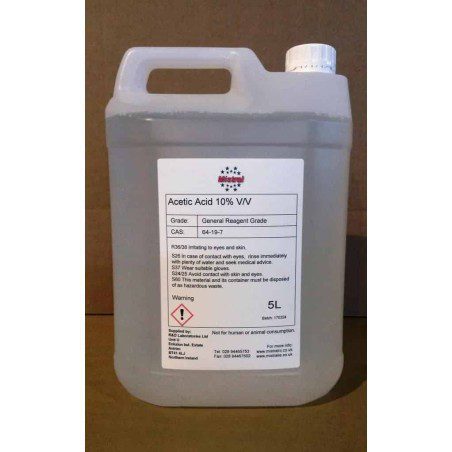
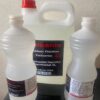
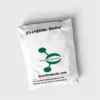
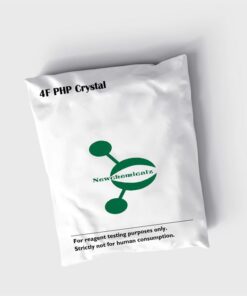
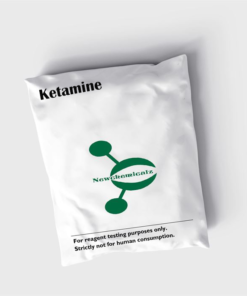
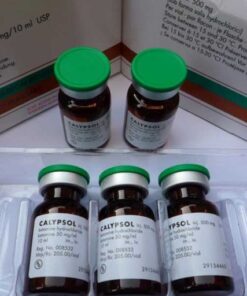
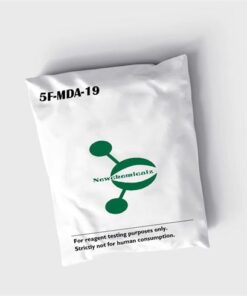
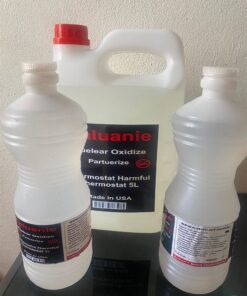
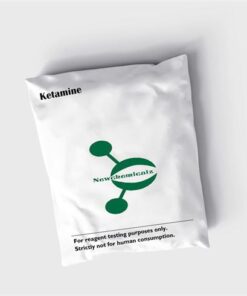
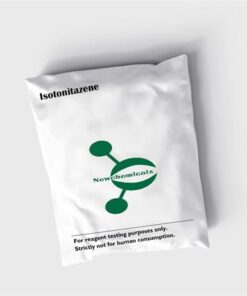
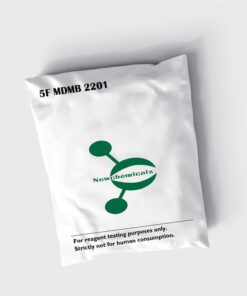
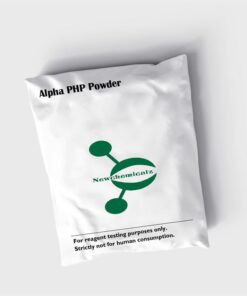
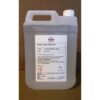
Reviews
There are no reviews yet.